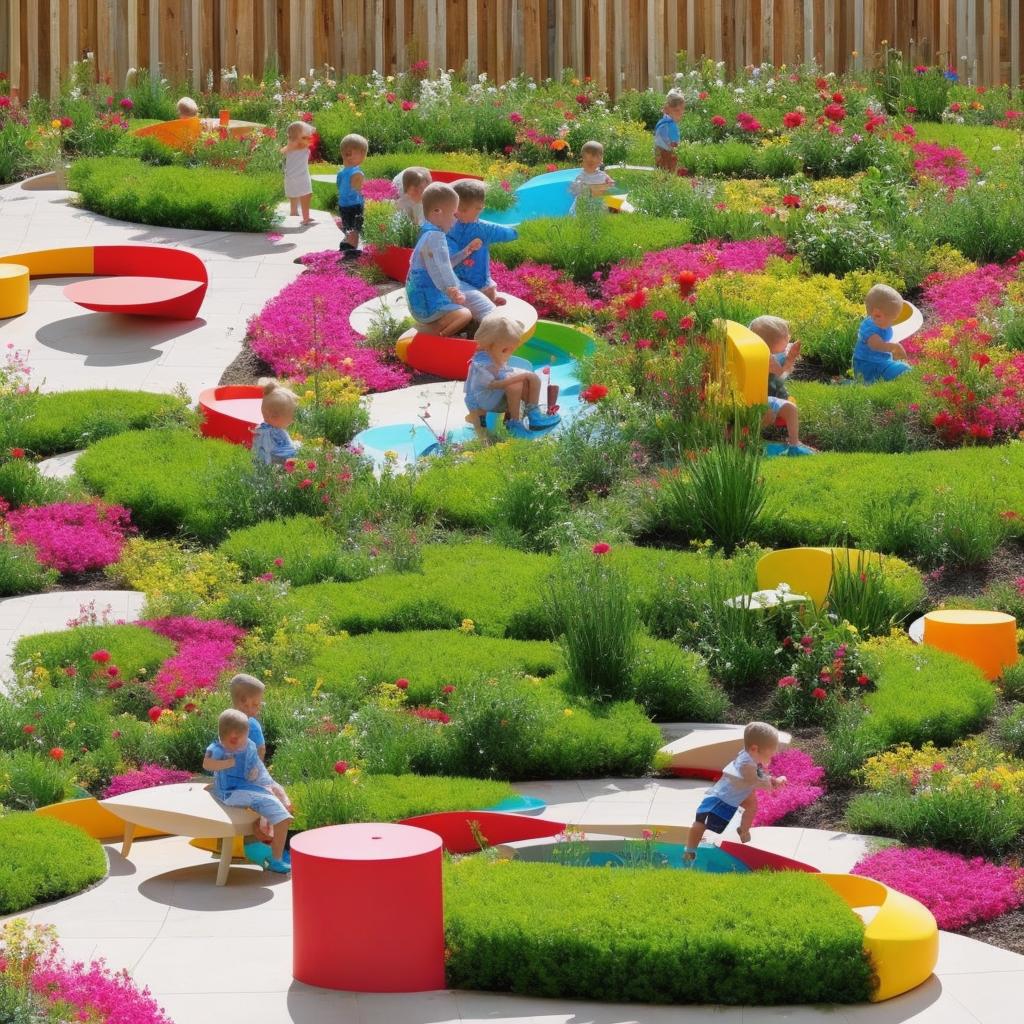Children with special needs often experience the world in a unique way, often relying on their senses to understand and navigate their surroundings. Designing a sensory garden specifically for these children can provide them with a safe and engaging space where they can explore, learn, and thrive. In this article, we will explore the key considerations and design elements involved in creating a sensory garden that caters to the specific needs of children with disabilities. From sensory plants and textures to interactive features and calming zones, we will delve into the world of sensory garden design for children with special needs.
Creating a Stimulating Environment through Sensory Elements
When designing a sensory garden for children with special needs, it is important to consider various elements that can help create a stimulating environment. One key aspect is the use of colorful plants that can engage children’s senses and encourage exploration. Flowers with vibrant hues and plants with interesting textures can provide a multisensory experience for children as they interact with the garden.
Incorporating sensory pathways in the garden can also enhance the overall experience for children. By including different textures underfoot such as soft grass, smooth stones, and squishy moss, children can engage their sense of touch while they navigate through the space. Additionally, adding water features like bubbling fountains or miniature ponds can provide a calming auditory experience for children with special needs.
Incorporating Therapeutic Plants and Trees
When designing a sensory garden for children with special needs, it is important to consider incorporating various therapeutic plants and trees that can engage their senses and provide a calming environment. One of the key elements to include in the garden is plants with different textures, colors, and scents that can stimulate the senses of touch, sight, and smell. Plants such as lavender, chamomile, and mint can be great options to incorporate into the garden as they have soothing scents and soft textures that children can interact with.
Additionally, trees can play a significant role in creating a peaceful and serene atmosphere in the sensory garden. Trees like cherry blossoms, magnolias, and willows can provide shade and a sense of tranquility for children to relax and unwind. Consider planting a variety of trees with different shapes, sizes, and foliage to create a diverse and visually appealing space for children to explore and enjoy.
Designing Safe and Accessible Pathways
In designing a sensory garden for children with special needs, it is important to consider a range of elements to ensure safety and accessibility. One key aspect is providing clear pathways that are wide enough for wheelchair users and those with mobility aids. By incorporating smooth surfaces and gentle slopes, children with physical disabilities can navigate the garden with ease. Additionally, using contrasting colors and textures along the pathways can help guide visually impaired children and those with sensory processing disorders.
Another crucial consideration is ensuring that the pathways are free of obstacles and hazards. This includes removing any trip hazards such as loose gravel, uneven surfaces, or low-hanging branches. Creating designated play areas along the pathways can also help children with special needs engage in sensory activities tailored to their individual preferences. By incorporating elements such as interactive water features, textured surfaces, and fragrant plants, children can explore and engage with the environment in a way that is both safe and enriching.
Using Tactile Surfaces to Enhance Sensory Experiences
One way to design a sensory garden for children with special needs is to incorporate a variety of tactile surfaces that can enhance their sensory experiences. By including different textures such as soft grass, bumpy rocks, smooth pebbles, and squishy plants, you can create a multi-sensory environment that stimulates their sense of touch.
Additionally, using materials like gravel, sand, wood chips, and rubber mulch can provide children with diverse tactile experiences. These surfaces can be integrated into pathways, play areas, and seating areas within the garden, allowing children to explore and interact with the different textures. Providing a range of tactile surfaces in a sensory garden can help children with special needs improve their sensory processing skills and overall sensory development.
Wrapping Up
designing a sensory garden for children with special needs is a wonderful way to create a safe and stimulating environment that caters to their unique needs. By incorporating a variety of sensory elements such as textures, scents, colors, and sounds, you can provide a space that is not only therapeutic but also fun and engaging for children of all abilities. Remember to consider the individual preferences and sensitivities of each child when designing your garden, and don’t be afraid to think outside the box and get creative with your designs. With some careful planning and a little bit of imagination, you can create a magical outdoor space that will bring joy and enrichment to children with special needs for years to come.




